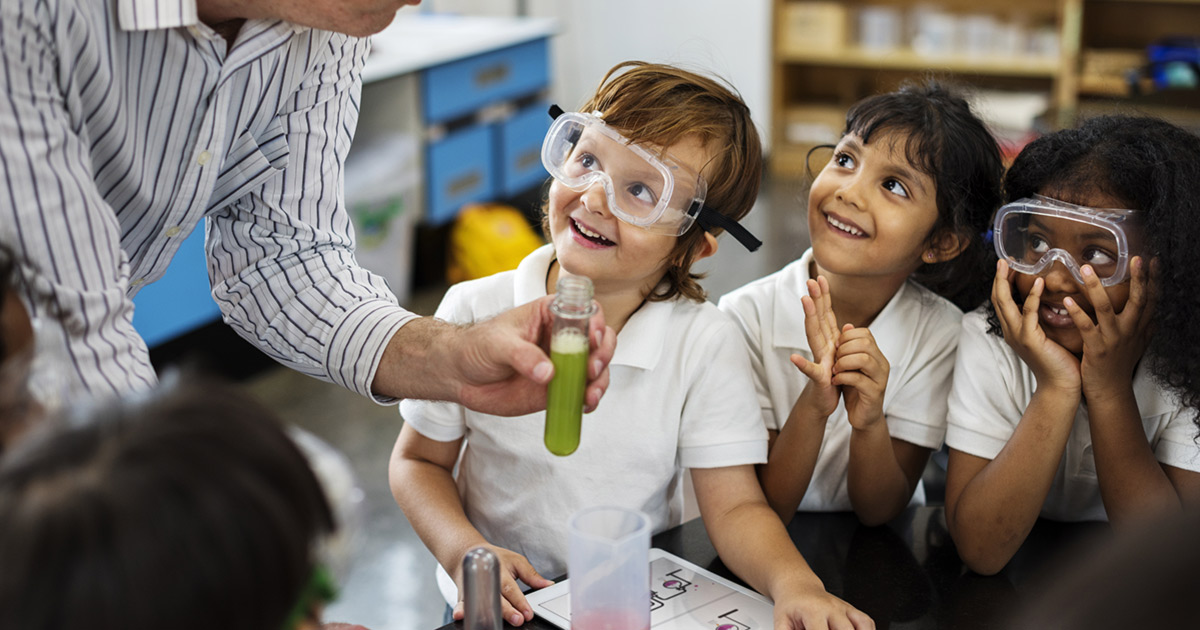
Sometimes the smallest practices and moments can make a huge difference in the classroom and with students. Ask anyone about their best school memories and, chances are, they will have little to do with the lessons or the test scores and much to do with the relationships and connections they formed with their teachers. Here’s a look at small classroom practices that have a mighty impact.
Welcoming students at the door
There’s so much to do at the start of class, but greeting your students should be at the top of that list. In fact, a recent study showed that teacher greetings at the door of a classroom “produced significant improvements in academic engaged time and reductions in disruptive behavior,” increasing engagement by 20% and easing disruptive behavior by 9%. So, instead of frantically setting up the projector or SmartBoard, fussing with the attendance or tidying up your classroom, welcome students as they arrive. Work on some fun handshakes or merely smile and make eye contact with each student as they arrive.
Personalizing feedback
When a student hands in an assignment, it can sometimes seem like it disappears into the abyss of the teacher tote bag. Anyone can slap a letter grade or a score on a piece of student work or make a few notes that point out what wasn’t done well. However, truly personalized and actionable feedback shows your students that the work they do is genuinely valuable, seen, and evaluated by someone who knows and cares for them.
“For many teachers, offering individualized feedback sounds like hours of extra work but, once you’ve adjusted your mindset (as well as that of your students), providing personalized feedback is actually more immediate and impactful,” according to Epiphany Learning. “Personalized feedback is powerful because it shows each and every one of your students that you view them as individual learners with unique strengths, challenges, and goals. When students know you see them as real people and not just a row of numbers in the grade book, they’re much more likely to buy into your approach and view your classroom as a safe place where they can grow and improve.”
Making positive phone calls
Shake up a student’s day by making a positive phone call home. So often, parents only hear from a school when things are going wrong. Building in some positive reinforcements can seriously change a classroom dynamic.
“Children who struggle with negative behaviors internalize the negative feedback they receive. If poor behavior is the only thing that receives attention, then that negative behavior is likely to continue,” according to PBIS Rewards. “The resulting poor self-esteem and lack of motivation become a vicious loop that continues to feed poor behavior…Encourage [teachers] to select students who might need a little extra encouragement and challenge them to identify positive behaviors that they can praise to parents with a quick, focused phone call.”
Giving students choice
When students feel more in control of their learning, engagement grows. Instead of using the same old teacher-provided content and tasks, give students some latitude to make a few choices. “Student choice is more than simply choosing a topic. It is about empowering students through the entire learning process,” says former middle school teacher and professor John Spencer. “When we incorporate choice, students own the learning process. We honor their agency and empower them to become the life-long learners we want them to be. At some point, they will leave the classroom, and they won’t have a guide right there by their side. They will have to take charge and make decisions about their own learning. This is why student choice is so critical.”
Making connections outside of class
Make students feel seen and heard outside the classroom, even in passing. A quick hallway greeting, a compliment or even a smile and fist-bump can really go a long way toward building community. Remembering even a small gem about your students’ interests and mentioning it lets your learners know that you know them and care about them. “I have found that the more I greet students in the hallway, the more they make eye contact with me… and the more they initiate a greeting with me the next day,” says Danny Steele, a principal in Alabama. “It’s usually not hard to make connections with kids…but the adults need to be willing to take the first step.”
Jennifer L.M. Gunn spent 10 years in newspaper and magazine publishing before moving to public education. She is a curriculum designer, teaching coach, and high school educator in New York City. She is also co-founder of the annual EDxEDNYC Education Conference for teacher-led innovation and regularly presents at conferences on the topics of adolescent literacy, leadership, and education innovation.
Categorized as: Tips for Teachers and Classroom Resources
Tagged as: Mid-Career Teacher, New Teacher, Teacher Leadership, Teaching Impact
